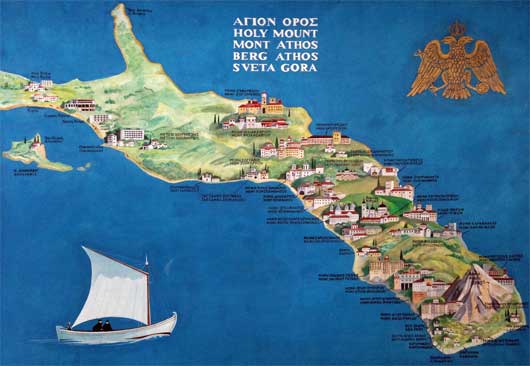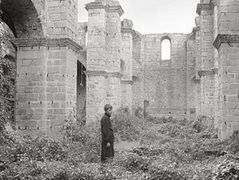Source: ANSAmed
May 7, 2016

Spirituality, faith, silence, mystery, untouched natural landscapes and meditation are what Mount Athos is most known for. The 'theocratic republic' in northern Greece is where Orthodox monks, spread out among a few medieval monasteries, live an existence of work and prayer that has remained unchanged for centuries and is depicted in an exhibition of photos by Stratos Kalafatis in Rome entitled 'Athos', the Colors of Faith'. Sponsored by the Greek embassy in Italy and the Italian section of the Greek Culture Foundation, the exhibition was inaugurated on Friday and will remain open until May 22 and includes 120 photos taken between 2008 and 2013. The photographer told ANSAmed that he had ''been at Mount Athos 26 times for a total of about 200 days. I took photos of monks as I would have taken photos of any other human subject.'' ''They gave me hospitality, warmth, friendship and openness.
During my trips I saw places, faces and images - especially that of the cross - that over time were transformed from an external object to an internal moment. I think that even though there are differences between Christians, all of us identify with the cross and its strong symbolism.'' Kalafatis's photos are all of very strong chromatically and the cross reappears often in different shapes, colors and sizes.
And then there are the faces: old, bearded monks as well as young ones portrayed in a light reminiscent of Caravaggio or Rembrandt. ''There is no electricity on Mount Athos. There is only natural light or candles and so I made these portraits like a painter from the past would have. And many of my influences -in addition to the photographers Diane Arbus, Anders Petersen and Alex Hoff - are Renaissance painters,'' the artist said, who is originally from Kavala in northern Greece. Women are not allowed on Mount Athos due to a ban known as 'avaton', and non-Orthodox Christian men are granted only very limited stays. Mount Athos is under the direct control of the Ecumenical Patriarchate of Constantinople and not the Greek government.
Kalafatis's photos express all the evocative power of the place and its timelessness, even in the objects shown: a table, a fish on a dish, a parrot perched on a monk's arm and a monk working in the fields. Kalafatis is part of a tradition in which photography tries to enter this mysterious locale. The first photographer to get there was the Russian Sebastianof, who in 1860 produced about 40,000 photographs on glass plates. He was followed in the twentieth century by such well-known photographers as Stephane Passet and Fred Boissonnas as well as a series of famous Greek photographers in the 1950s and '60s, such as Takis Tloupas, Kostas Balafas and Spyros Metletzis.




HOLY MOUNT
MONT ATHOS
BERG ATHOS
СВЕТА ГОРА